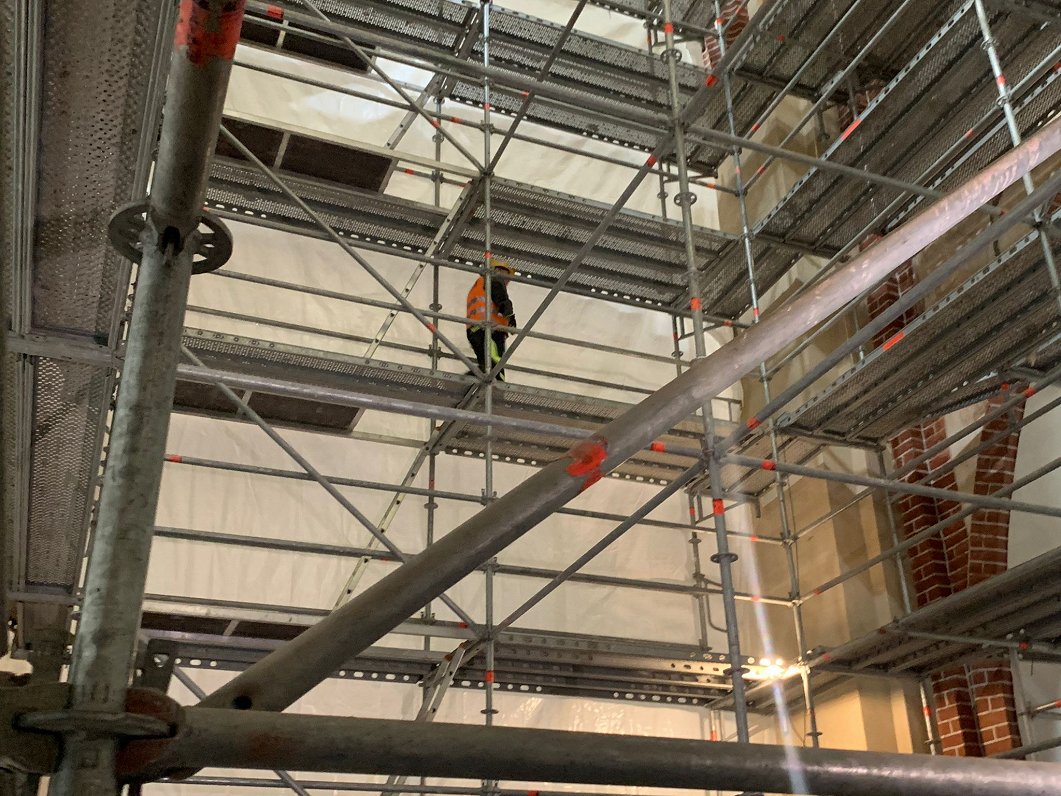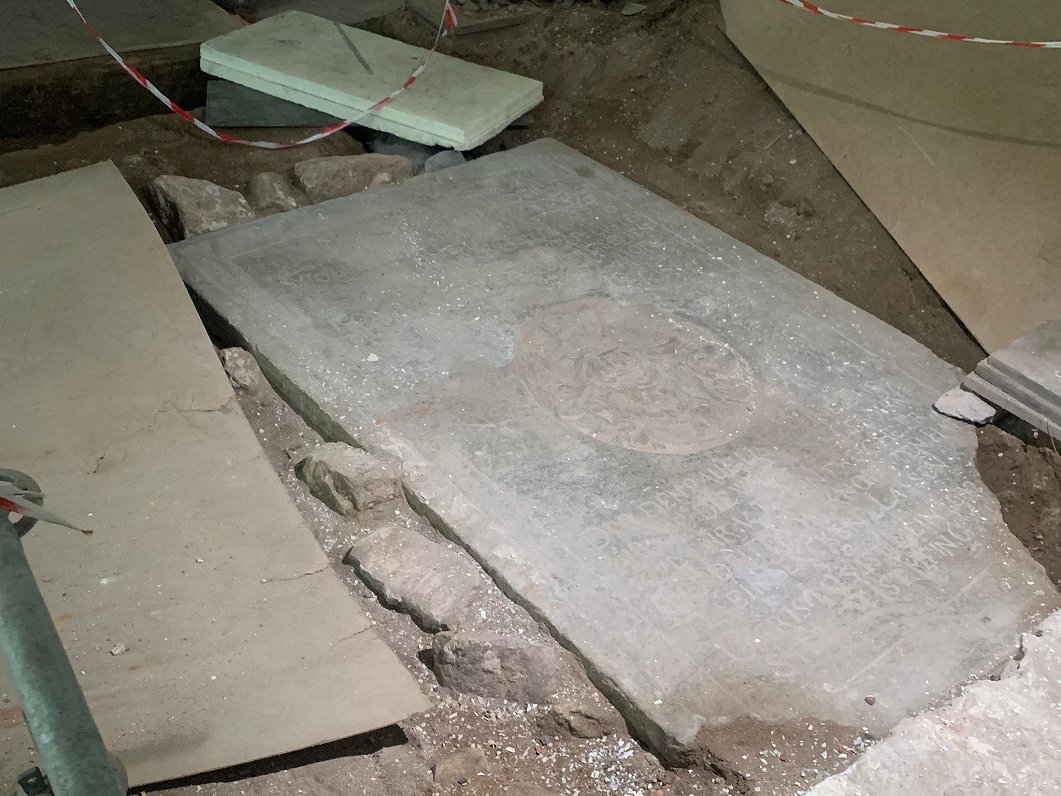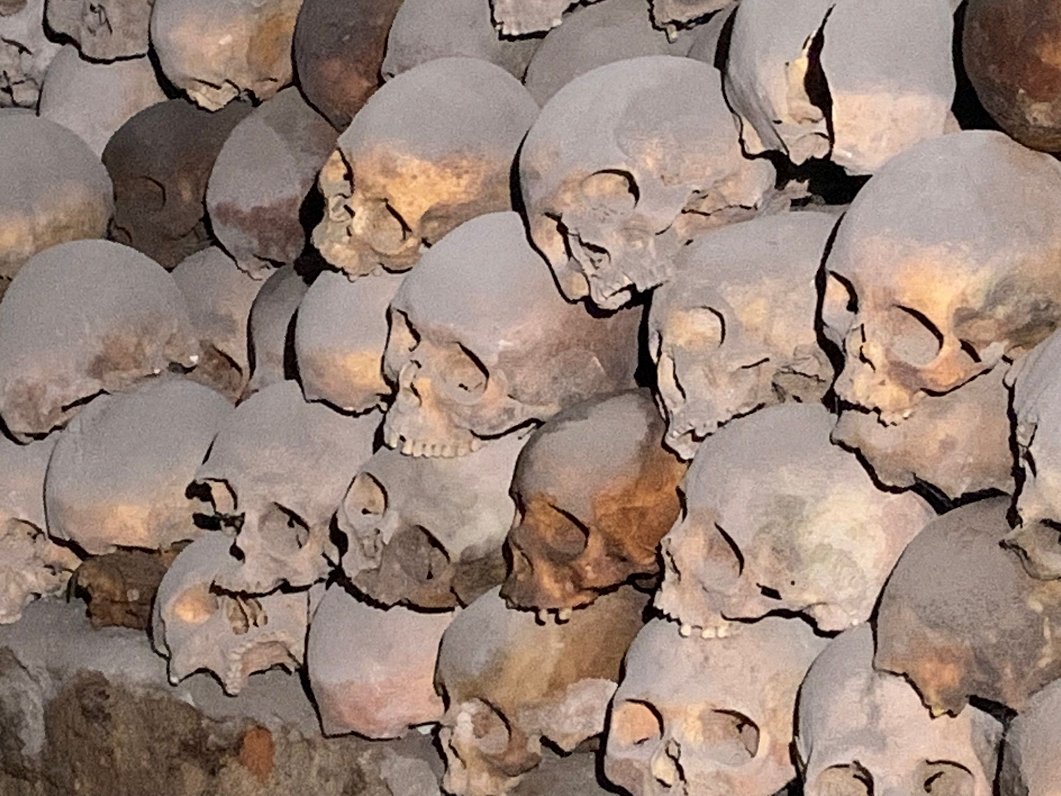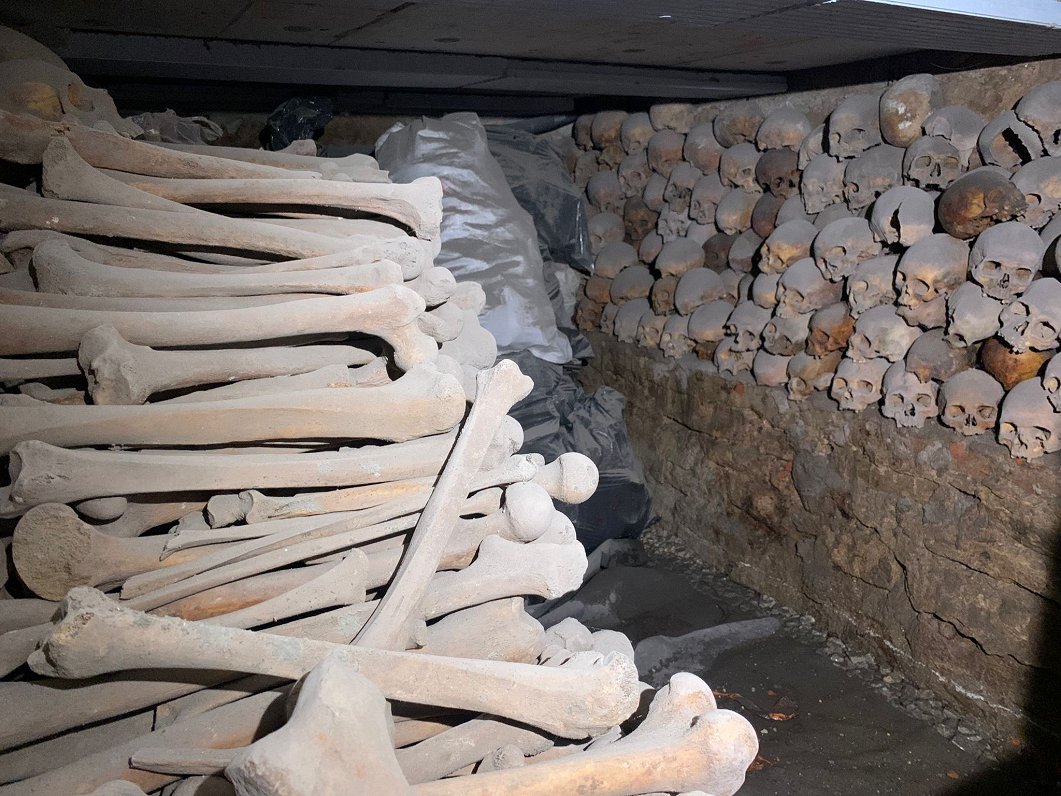The discoveries show that the wealthiest residents were buried inside the cathedral, while the others were buried outside, Doctor of History, archaeologist Artūrs Tomsons told Latvian Radio's "Known and Unknown" program.
The spire of St. Jekabs' is an integral part of the famous Old Rīga cityscape. "What we know about the oldest history of the cathedral is that the original version of this building was outside the walls of the first Riga German settlement," Tomsons said.
Therefore, it is possible to conclude that the people buried around the cathedral are not of German origin – the poorest residents, travelers and similar people. When Old Riga began to grow, a new wall included the cathedral within the city limits.

For one hundred years, the cathedral has been the seat of the Catholic archbishop, but the metal rooster characteristic of Lutheran churches is still on the top of the cathedral tower, which proves the importance of the building for Lutherans for several centuries.
Three years ago, the metal rooster was restored and returned to the tower resplendent, and then word spread that according to measurements, the rooster actually sits much higher than previously thought, at 91.64 meters. But the restoration of the rooster is only a part of the story of extensive restoration works of the cathedral over the last years, during which archaeological excavations also took place.
Bodies under Klostera Street
"In 2018, when these works began, excavation works were carried out under Klostera Street, digging four trenches to connect the cathedral to the city's water networks. Cross-sections of the trenches showed that this building was originally located on a small, sandy hill. Today, the cultural layer has grown several meters in thickness and the streets of Old Riga are approximately at the same level, but the original terrain of Old Riga was very uneven," said Tomsons.
However, not only terrain changes were discovered, but also medieval burials, which came as a surprise to many involved in the work. The archaeologist said that this is not unusual, knowing how little space there was in the ancient cities.

"Of course, this is the fate of all city churches, being inside the historical center, that the city grows and in cities there is very little space inside the walls until the walls are demolished, and we know that the walls were demolished in Riga only in the second half of the 19th century. Most likely, people were also buried here during the Northern War.
"When we walk along Klostera Street, under our feet there are thousands, thousands of human remains lying one and a half to three meters deep," revealed Tomsons.
"In 2018, a strip close to the cathedral with a width of about one meter was investigated due to the fact that the old supporting wall, which was re-concreted, had started to crumble. While dismantling the old wall, quite impressive piles of archaeological material were revealed, which is due to the fact that in medieval cemeteries space was very limited, and old burials were disturbed when new burials were dug in. Consequently, this material had been stacked along the outer walls of the cathedral. A particularly impressive volume was exposed on the south wall," Tomsons said.
After the involvement of anthropologists in the research, it was revealed that these buried people had performed hard, physical work before their death, which was evidenced by the condition of the bones, the wear of their teeth and other signs.
"Probably here we get confirmation that the congregation of St. James' Cathedral at the time this cemetery existed are natives who are not patrician, who are not elite, who are not even really middle class. At least those who were buried outside the cathedral wall," Tomsons pointed out.
Close to the altar costs more
In addition to the works around the cathedral, the second large block of archaeological excavations was made inside the cathedral, where the floor covering is being replaced, and in some places the builder needed to dig into the foundations of the church for the construction of air ventilation.

"Since this place has been under a roof over the centuries, it was found during the archaeological monitoring that various evidences of organic materials are quite well preserved. Including fabric. Not a lot, but of very good quality.
There we see a completely different social picture than what is outside the cathedral. Here are the patrician, wealthier people who could afford to pay for this burial place inside. Of course, the closer to the altar, the more expensive," said Tomsons.
The researchers concluded that, especially in the final phase of the cemetery, the available space in the church and its surroundings was used very intensively. The dead are placed in rows, very densely laid in coffins with their heads to the west and their feet to the east, as is the Christian tradition.
Currently, all archaeological finds are placed in a special ossuary in the Cathedral of St. James, where you can see through the glass what the bones of the dead look like.
"When the works inside the cathedral had already taken place for some time, in consultation with all those involved in this project, a decision was made to build a special ossuary in the place where one had historically been. Not to rebury, but to find a solution so that this anthropological material is also available to researchers in the future. When you look at the plans of the 19th century in the third passage of the northern part, it is written there exactly: the bone chamber. A decision was made to restore the ossuary in this historical place," said Tomsons.



























